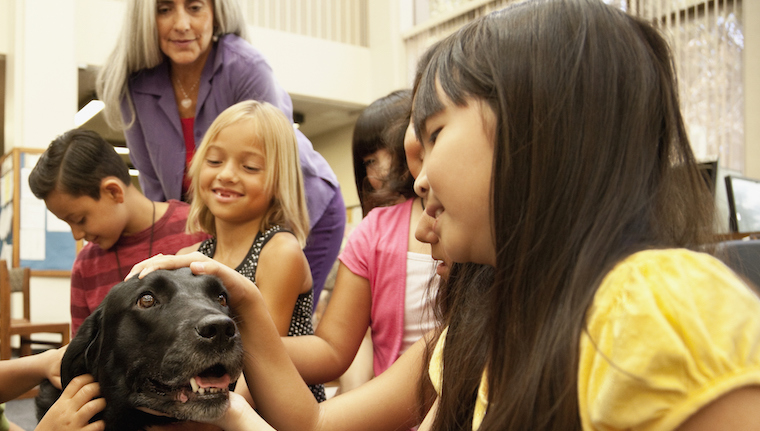Researchers recently proved that dogs lower stress in children. The body produces cortisol in response to traumatic situations. A new study from the University of Lincoln (UK) measured cortisol levels in elementary students’ saliva to test whether or not a dog could help with relaxation.
Stress Affects Learning
Children exposed to Adverse Childhood Experiences (ACEs) often experience increased cortisol levels and may suffer from negative effects of stress on their learning and behavior. Yoga, mindfulness, and meditation are typical activities that schools use to decrease stress and foster a positive classroom environment. These are helpful practices. However, the schools may be barking up the wrong tree.
Service dogs are usually invited to school campuses to reduce anxiety over exams or to assist students coping with a community tragedy. Most people recognize the calming, healing powers of a dog’s loving presence. However, the UK study scientifically validates a dog’s ability to physically reduce stress in anxious or traumatized children. In the future, full-time classroom dogs could be key to helping students learn!
Dogs Prove to De-stress Best
Researchers found that time spent with dogs greatly lowered children’s stress levels. Surprisingly, dogs appeared to de-stress students better than 20-minute relaxation sessions. They also found that canine-time kept cortisol levels lower for longer periods.
“Dog-assisted interventions can lead to lower stress levels in school children with and without special educational needs,” stated researcher Kerstin Meints. She also added that the findings suggest the importance of additional research. Specifically, researchers should look into the ideal amounts of time and contact with dogs for the best effect. Those frequently around dogs know the benefits of the happy presence of a four-legged friend. In particular, pet parents might answer that the ideal amount of time and contact is “all the time” with “lots of dogs.”







